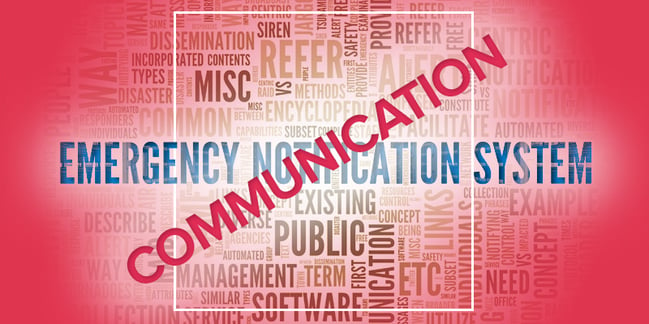
College campuses and military installations are among the first sites that come to mind as having embraced mass notification systems, but the need to quickly communicate vital information to large numbers of people is being recognized by many verticals such as manufacturing plants, public gathering spaces and even entire municipalities. The impact of severe weather outbreaks, fire emergencies and other tragic events can be mitigated with improved communications.
Current technology, often centered around mobile devices, has pushed traditional mass notification systems (MNS) toward the “old school” category, being upgraded in many cases to emergency communications systems (ECS). Two main elements separate traditional MNS from advanced emergency communications.
Whereas “mass notification” implies one-way communication such as an automated fire announcement delivered via loudspeaker, newer technologies allow for bi-directional communications. People impacted by the emergency can inform officials of their location, report that they need help, or send localized information about the emergency event which can be beneficial to centralized security and emergency personnel.
The second noteworthy improvement possible with contemporary emergency communications platforms is integration with other security systems or with different forms of emergency communications. This can include incorporation of alerts of severe weather or other threats, as well as integration with other building systems like lighting or HVAC. An intelligent and integrated security and communication system can cut off the flow of air to a zone where a fire has been detected, as an example; or can turn on lights in an area where an intruder has been detected. These improved emergency systems can also facilitate transmission of detailed instructions about safe exit routes or other instructions to affected people.
Leveraging the fact that most people have a mobile phone, mobile apps are an obvious avenue for communicating emergency information. But the effectiveness of this avenue depends on the accuracy of employee contact information and/or people’s willingness to “opt-in” to receive alerts in community settings. Sophisticated emergency communication systems enable syncing to contact databases, as well as geofencing to include only people in the vicinity of the event, and also scheduling data to forego notifying off-duty employees.
In a warehouse or manufacturing setting mobile phone connectivity may be compromised, resulting in uninformed people. The inclusion of IP speakers and digital signage into emergency communication systems can prove to be vital in reaching all employees, or all members of a large crowd of people. The benefits of a more comprehensive communications system are evident, and can prove to be an essential element of a security program.
